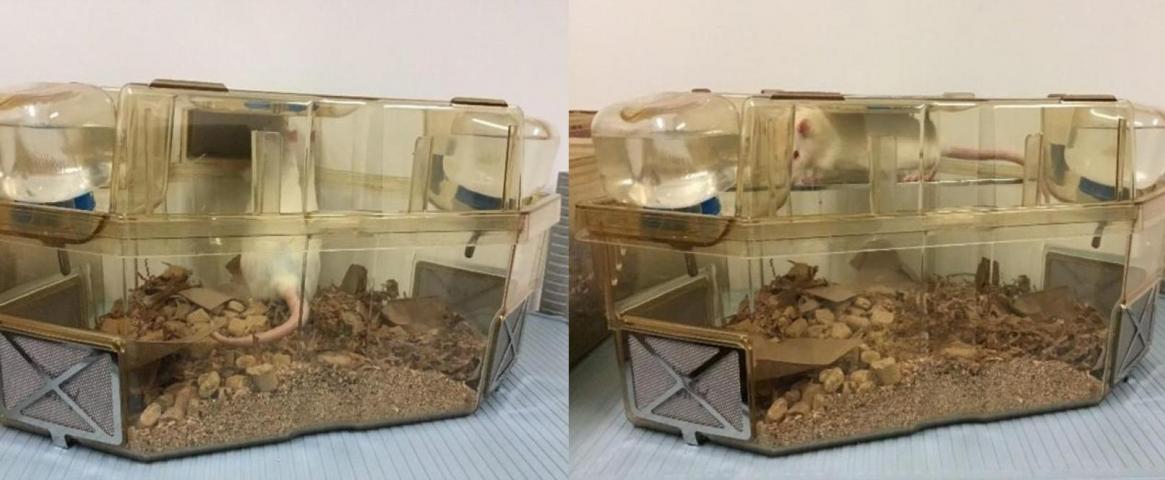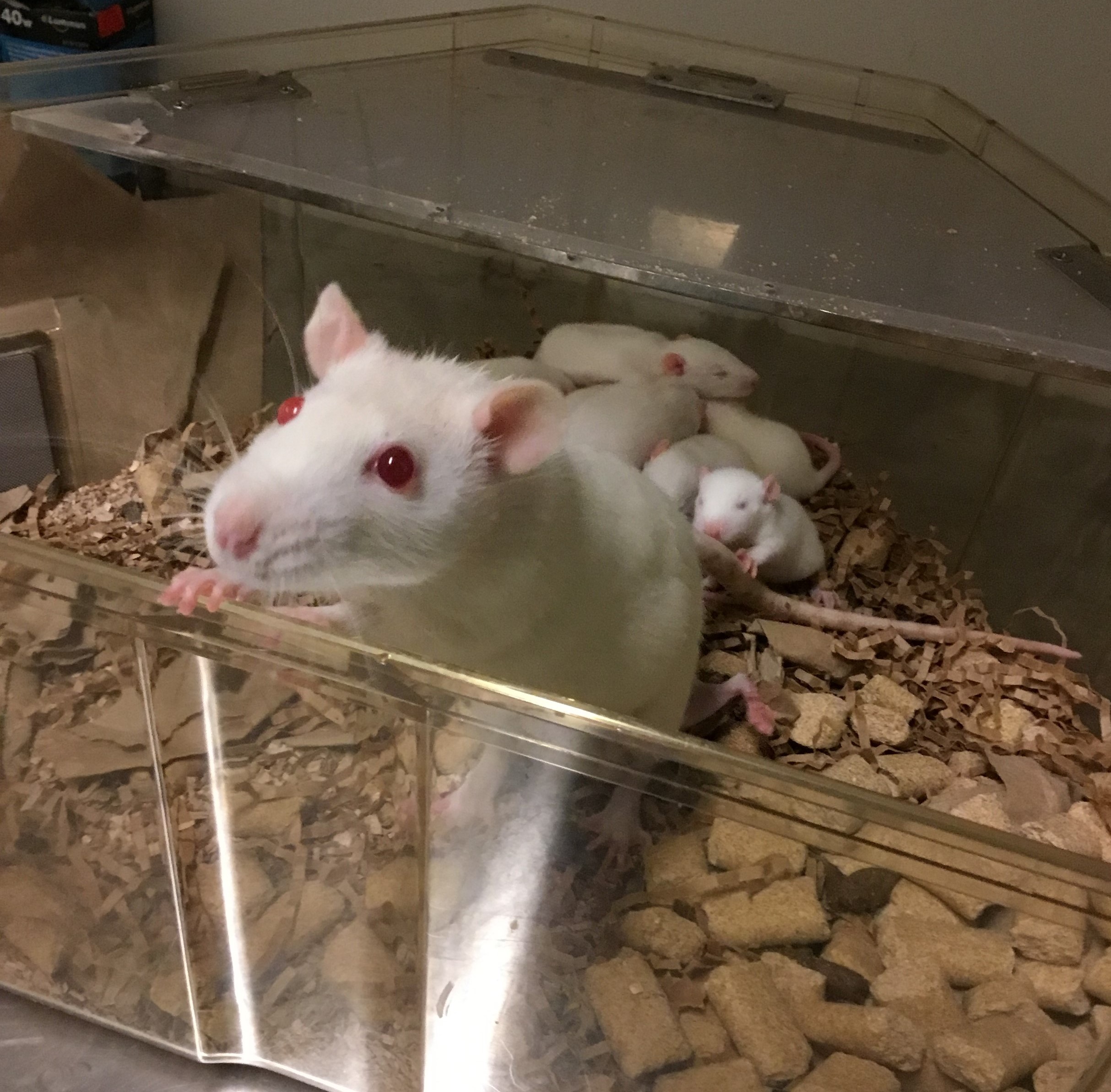By Caitlyn Finton
During hours watching rat mothers in laboratory cages as an animal care technician at Dalhousie University in Halifax, Canada, undergraduate Anna Ratuski was struck by how relentlessly babies nursed and clambered all over their mothers. That led her to wonder : don’t rat moms need a break? Turns out, the answer is yes, as Ratuski’s graduate research at the University of British Columbia recently revealed. When lactating rat moms have a place to escape to, their wellbeing improves .
In the wild, rat moms leave the nest for short periods to forage for food, giving themselves a natural break from their pups. But in the constrained, unnatural environment typical of laboratory housing, captive rat mothers have no place to go. This is an inherently stressful situation, says University of
Guelph animal welfare expert and researcher Georgia Mason, who was not involved in the study. “In conventional intensive conditions, these mothers are like parents in lockdown,” she says.
To test just how important an occasional parenting break is, Ratuski and her UBC supervisor Dan Weary created two experimental groups of rats. All individually housed females had access to a loft in their cage in early pregnancy, but just before giving birth, some rats had their lofts removed. Lofts provided a place to climb to where pups could not follow, providing rat moms the possibility of alone time. Documenting
behavior over time using video recordings, they found that rat moms with lofts used them increasingly as pups aged and became mobile. When pups were one to three weeks old, the time moms spent in lofts almost doubled.
Loft time also altered whether rat babies nursed actively or passively. During active nursing, mothers choose to nurse, positioning themselves for easy nipple access and pup grooming. In contrast, with passive nursing, pups are the initiators, latching onto mom even while she sleeps, eats, or tries to get away.
Ratuski and Weary found that loft access did not decrease active nursing but did decrease passive and total nursing time, especially in the second and third weeks of lactation. Lofts give mothers more control over nursing duration, and when rat moms need a break they take away the mobile milk bar.
Ratuski and Weary also measured rat mothers’ emotional state, using anticipatory behavior tests to evaluate their sensitivity to a delectable Froot Loop reward. Rats were trained to expect a reward after the experimenters rattled their cage and beeped a timer. Following training, Ratuski and Weary measured the rats’ behavior as they waited for the reward. In theory, rats in a negative emotional state get extra excited about the Froot Loops. As predicted, they found the most excited rat mothers were those denied loft access, suggesting a rat mom’s overall welfare is improved by letting her take a break.
Ratuski thinks this improvement in wellbeing comes down to giving mothers more agency. “When we give rats more choice in their environment, they exercise that choice,” and it seems to positively impact their emotional state.
Mason agrees, though she cautions against overinterpreting the anticipatory behavior test. Just as people might as readily overeat as undereat when stressed, anticipatory behavior, she explains, can be interpreted in opposite ways. Still, she says, it’s clear that rat moms prefer having lofts over not. By readily using lofts, they’re “voting with their paws” for continued access.
Apart from better understanding what’s good for mom, the study, published June 2021 in PLoS ONE also has implications for how we view and use rats in research. By allowing for more natural maternal behavior, pups are receiving “a more complete or wholesome development than rats in a standard cage,” says Sylvie Cloutier of the Canadian Council on Animal Care based in Ottawa, Canada. And by giving lab rat moms a better life and allowing maternal behaviors more akin to those of their wild cousins, Weary thinks the validity of rats as research models is improved.
“With lofts available, they're living a better life,” Weary says, and that wellbeing may also extend to rat babies .
Caitlyn Finton is a doctoral student at Cornell University working towards a Ph.D. in Psychology. She is currently the graduate student writing fellow at the online magazine The Behavioral Scientist. She has also written for the science blog CogBites and the website Massive Science. Follow her on Twitter @BioBookworm or email her at cjfinton1994@gmail.com.
This story was produced as part of NASW's David Perlman Summer Mentoring Program, which was launched in 2020 by our Education Committee. Finton was mentored by Lesley Evans Ogden.
Main image: A rat cage without (left) and with (right) a loft provided. Credit: Anna Ratuski





